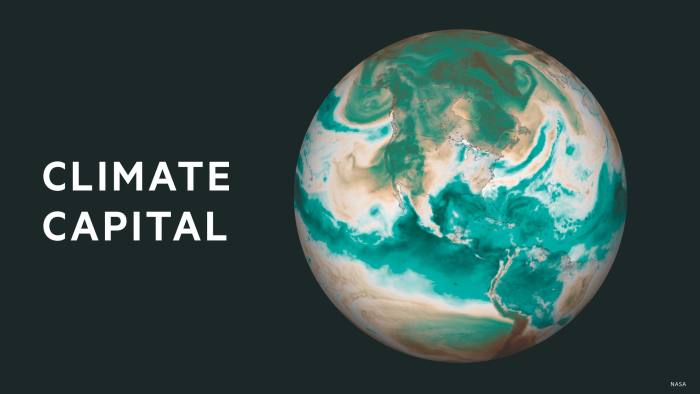More than 1,000 people have been killed and nearly 1mn homes damaged in the worst flooding to hit Pakistan in at least a decade, as the latest in a series of climate change-induced catastrophes imperils its economic recovery.
Torrential rains and flooding have swept through Pakistan in recent weeks, hitting Sindh, Balochistan and Khyber Pakhtunkhwa, three of the country’s four provinces. Sindh has received almost eight times the average amount of rainfall in August, according to government data, wiping out crops such as rice and cotton.
Officials estimate that more than 30mn people have been affected, or about 15 per cent of the population, and thousands forced to abandon their homes.
“It’s the climate catastrophe of the decade,” climate change and environment minister Sherry Rehman told the Financial Times in an interview. “In living memory, we have not seen such a biblical flood come to Pakistan.”
South Asia has been beset by extreme weather events in recent months, with heatwaves succeeded by torrential rains that have killed thousands of people across India, Bangladesh and Afghanistan.
The floods have added to Pakistan’s financial distress. The IMF’s board on Monday is expected to approve a $1.2bn disbursement to shore up the country’s dwindling foreign currency reserves, which have fallen to around five weeks’ worth of cover for import. Inflation has also soared, with an indicator of “sensitive” items such as food and other essentials last week rising to 45 per cent year-on-year.
Rehman predicted authorities may be forced to divert development grants and potentially budget funding to manage the fallout.
“We’ll have trouble with our import bills and a foreign exchange reserves will be impacted because we’ll be importing food now, in a much larger [way],” she said. “Once our trade balance is impacted, the rupee will be further weakened. We’re facing a very tough time ahead.”
The government is preparing a UN appeal for humanitarian aid to support affected areas and Prime Minister Shehbaz Sharif met with foreign diplomats on Friday to push for more international aid. “The ongoing rain spell has caused devastation across the country,” he said.
Investors had feared that Pakistan could follow Sri Lanka in defaulting, though the prospect of upcoming assistance from the IMF — part of a $7bn package launched in 2019 — has largely eased those concerns. China recently lent more than $2bn to Islamabad, while Saudi Arabia has agreed to renew a $3bn deposit at Pakistan’s central bank. Pakistani authorities anticipate more aid from countries including Qatar.
The flooding has piled further pressure on Sharif’s government as it faces a sustained political challenge from former prime minister Imran Khan, who was ousted this year in a no-confidence vote. Khan popularity has since surged as he has pressed for new elections but is on bail after being charged last week with terrorism offences over a controversial speech.
Some policy experts argue that chronic neglect and mismanagement has exacerbated the toll from the climate change-induced catastrophe.
Abid Suleri, head of the Sustainable Development Policy Institute think-tank, said “man-made disasters”, such as buildings constructed poorly and in unsafe locations, have added to the damage. “Natural calamities cannot be averted [by any one country] but human catastrophes flowing from them can be avoided,” he said.
But Rehman argued that no country could handle such extreme flooding. “If Islamabad were to get 700 per cent extra rain, Islamabad would pack up — as would New York,” she said. “It’s sexy to say it’s a development failure . . . But I’m not sure that’s all there is to the story. It’s just too much water.”
Climate Capital

Where climate change meets business, markets and politics. Explore the FT’s coverage here.
Are you curious about the FT’s environmental sustainability commitments? Find out more about our science-based targets here


























































![Mason Ramsey – Twang [Official Music Video] Mason Ramsey – Twang [Official Music Video]](https://i.ytimg.com/vi/xwe8F_AhLY0/maxresdefault.jpg)




















